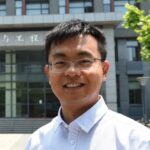Distinguished Lecturers 2024
The IEEE NTC is pleased to announce the appointments of Distinguished Lecturers for 2024.
Talks by NTC Distinguished Lecturers can be requested by: IEEE student branches; NTC or member Society Chapters; NTC and member Society Conferences; conferences of other IEEE Societies not members of the NTC for major plenary/keynote (based on availability of funding). Please contact the presenter directly to arrange for a presentation.
| DL Names | Topic(s) |
| Cunjiang Yu |
|
| Jean-Pierre Leburton |
|
| Xinran Wang |
|
| Pedram Khalili Amiri |
|
| Mohsen Rahmani |
|
| Gengchiau Liang |
|
| Sanjukta Bhanja |
|
| Xiangfeng Duan* |
|
| Zetian Mi* |
|
| Jiming Bao* |
|
| Xiaoying Zhuang* |
|
| Li Tao* |
|
| Zenghui Wang* |
|
| * Re-appointment for second year. | |
 Cunjiang Yu
Cunjiang Yu
Affiliation: Pennsylvania State University, PA, USA
Email address: cmy5358@psu.edu
IEEE NTC Distinguished Lecturer Talk Title:
Rubbery electronics: materials, devices and integrated systems
Abstract:
This presentation will introduce a groundbreaking solution to the challenge of seamlessly integrating electronics with the human body. Traditional electronics, rigid and planar, face inherent mismatches with the soft, deformable nature of the human body. Our approach, termed “rubbery electronics,” relies on the use of elastic, rubbery materials for semiconductors, conductors, and dielectrics. These materials exhibit tissue-like softness and mechanical stretchability, enabling seamless integration with soft, deformable tissues and organs. The talk will delve into the development of rubbery semiconductors, transistors, integrated electronics, sensors, and bioelectronics. Furthermore, it will showcase functional systems enabled by rubbery electronics and explore their applications in healthcare, robotics, and human-machine interfaces. This platform technology opens doors to diverse opportunities, promising significant advancements in various fields.
Bio:
Dr. Cunjiang Yu is the Dorothy Quiggle Career Development Associate Professor of Engineering Science and Mechanics, Biomedical Engineering, and Materials Science and Engineering at Pennsylvania State University. His recent research concerns the fundamentals and applications of soft and bio electronics. He has published ~100 journal articles and gave more than 130 invited talks and lectures at international conferences and institutions. His work has been recognized by numerous awards, including the CAB Mid-Career Award, ASME Thomas J. R. Hughes Young Investigator Award, the Society of Engineering Science Young Investigator Medal Award, ASME Chao and Trigger Young Manufacturing Engineer Award, NSF CAREER Award, ONR Young Investigator Award, NIH Trailblazer Award, Inaugural MIT Technology Review Top Innovator of China, AVS Young Investigator Award, etc. He is a Fellow of ASME.
Research group webpage: https://yuresearch.github.io/
Nick Holonyak Jr. Micro-and Nanotechnology Lab
University of Illinois at Urbana-Champaign.
208 Wright Street, Urbana, IL 61801, USA
Phone:217-333-6813
e-mail: jleburto@illinois.edu
URL: https://ece.illinois.edu/about/directory/faculty/jleburto
Distinguished Lecturer Talk Titles
- 2D Nano-electronic for DNA biosensing.
- Solid State Nanopores: From Genetics to Big Data Processing.
Abstract:
The last two decades have experienced rapid technological developments in the search of cheap and high accuracy devices for fast bio-molecular identification. In the realm of DNA and protein sequencing, there has been an increasing interest in the use of nanopores in solid-state materials because of their distinct advantage over biological pores in terms of flexibility in pore design and mechanical strength. Two-dimensional (2D) solid state materials such as graphene and Molybdenum di-sulphide (MoS2) in particular have attracted attention because of their atomically thin layered structure and electrically active characteristics, predisposing them to offer single base resolution and simultaneously multiple modalities of detecting biomolecular translocation. 2D nanopore devices promise seamless integration with semiconductor electronics and are poised to revolutionize a variety of technologies such as genomics, point-of-care diagnostics and digital data storage to name a few. In this talk, we review and provide insights into this sensing principle by modeling the electron flow through 2D material nanopore FETs, and propose a scalable device design of nanopore FETs to detect and identify translocations of single-biomolecules in a massively parallel scheme.
Bio:
Jean-Pierre Leburton is currently the Gregory Stillman Emeritus Professor of electrical and computer engineering with the University of Illinois at Urbana-Champaign. He joined the University of Illinois in 1981 from Germany, where he worked as a Research Scientist with the Siemens A.G. Research Laboratory, Munich. In 1992, he held the Hitachi Ltd., Chair on quantum materials at the University of Tokyo. He was a Visiting Professor with the Federal Polytechnic Institute, Lausanne, Switzerland, in 2000. He is involved with research in nanostructures modeling and in quantum device simulation. He is the author and the coauthor of more than 400 technical articles in international journals and books ,as well as of several patents in device electronics. His present research interests encompass non-linear transport in quantum wires and carbon nanotubes, spintronics and molecular, and bio-nanoelectronics.
Prof. Leburton is a Fellow of the IEEE (Life Fellow), APS, OSA, AAAS, ECS, and IOP. He is also a member of the New York Academy of Science. In 2011, he was elected as an Associate Member to the Royal Academy of Sciences of Belgium. He served as the Chairperson, an advisory, and program committees for numerous international conferences. In 1993, he was awarded the title of “Chevalier dans l’Ordre des Palmes Académiques” by the French Government. In 2004, he was a recipient of the ISCS Quantum Device Award and the Gold Medal for scientific achievement by the Alumnus Association of the University of Liége, Belgium. In 2019, he was a recipient of the CCMR Serendipity Award, Seoul, South Korea. In 2020, he received the IEEE-NTC Nanotechnology Pioneer Award for his pioneering contribution to the simulation of semiconductor nanostructures and low dimensional nanoscale devices.
Affiliation: Nanjing University, School of Electronic Science and Engineering, School of Integrated Circuits; Suzhou Laboratory, China.
Email: xrwang@nju.edu.cn
Talk title: 2D Semiconductors for Future Computing
Abstract:
2D transition-metal dichalcogenide (TMD) semiconductors are promising candidates in future electronics due to unmatched device performance at atomic limit and low-temperature heterogeneous integration. In this talk, I will present our recent advances in this area. The main topics include 1) wafer-scale single-crystal TMD (MoS2, MoSe2, etc.) growth by engineering the atomic steps of sapphire substrate; 2) high-performance MoS2 transistor technology including semi-metallic Ohmic contact, ultrathin dielectric integration and air-gap device structure for gigahertz frequency integrated circuits; 3) a duplex in-memory computing architecture based on ferroelectric field-effect transistor and MoS2 channel to realize efficient in situ machine learning. These advances demonstrate the potential of 2D semiconductors in future computing beyond silicon.
Bio:
Professor Wang received his B.S. degree in physics from Nanjing University in 2004 and Ph.D. degree in physics from Stanford University in 2010. Between 2010 and 2011, he was a postdoctoral researcher at Stanford University and then at University of Illinois at Urbana-Champaign. He then joined the faculty of Nanjing University where he is currently a full professor and head of School of Integrated Circuits. He also serves as the director of Frontier Materials Division of Suzhou Laboratory. His research interest includes 2D semiconductor materials growth, device technology, and integrate circuits. He has already published more than 170 papers in peer reviewed journals and conferences (including 2 in Nature and 2 in Science), and these papers have accumulated more than 26,000 citations. He has been recognized by a number of awards and honors, such as Xplorer Prize, Clarivate Highly Cited Researcher, Huang Kun Prize in Solid-state Physics and Semiconductor Physics, second prize of National Natural Science Award, and Chinese Youth Metal.
URL: https://ese.nju.edu.cn/wang_lab/main.htm
Affiliation: Northwestern University, Illinois, USA
E-Mail Address: pedram@northwestern.edu Web Address: http://perlab.org/
Lecture Title #1:
Nanoscale magnetism: From new materials to unconventional computing architectures
Abstract #1:
The emergence of magnetic random-access memory (MRAM) based on nanoscale magnetic tunnel junctions (MTJs) provides an unprecedented opportunity to develop unconventional computing architectures, with potential impact far beyond replacing existing semiconductor-based memory solutions. This talk will consist of two parts: First, we review the current state of development of ferromagnet-based MRAM, which uses current-induced spin-transfer torque (STT) to switch the magnetic state of nanoscale MTJs. We then discuss how emerging device concepts based on new physics and new materials may enable significant advances beyond today’s STT-MRAM. As an example of new physics, we discuss electric-field-controlled MTJs that utilize the voltage-controlled magnetic anisotropy (VCMA) effect for switching, and present recent results on the first VCMA-MTJ devices with sub-1V write voltage. Second, we will discuss how appropriately designed MTJs can be used to fulfill unconventional roles within a computing system, notably as electrically controlled stochastic bitstream generators. We then discuss the application of such devices to artificial neural networks, solvers for difficult computational problems such as combinatorial optimization and integer factorization, as well as physically unclonable functions.
Lecture Title #2:
Nano-electronic device implications of antiferromagnetic spintronics
Abstract #2:
This talk reviews recent progress in the field of antiferromagnetic spintronics. We discuss advances in the electrical control of antiferromagnetic order by current-induced spin-orbit torques, particularly in antiferromagnetic thin films interfaced with heavy metals. We also review possible scenarios for using voltage-controlled magnetic anisotropy as a more efficient mechanism to control antiferromagnetic order in thin films with perpendicular magnetic anisotropy. Next, the problem of electrical detection (i.e., readout) of antiferromagnetic order is discussed, where we highlight recent experimental advances in realizing anomalous Hall and tunneling magnetoresistance effects in thin films and tunnel junctions, respectively, which are based on noncollinear antiferromagnets. Finally, we present a perspective on potential applications of antiferromagnets for nanoscale magnetic memory devices, terahertz sources, and detectors.
Bio:
Pedram Khalili Amiri is Associate Professor of Electrical and Computer Engineering at Northwestern University, where he is also faculty member and Director of Graduate Studies in Applied Physics. He received the B.Sc. degree from Sharif University of Technology in 2004, and the Ph.D. degree (cum laude) from Delft University of Technology (TU Delft), The Netherlands, in 2008, both in electrical engineering. Pedram received the Northwestern University ECE department’s Best Teacher Award in 2020. He is an Associate Editor of Frontiers in Physics, and serves on the Editorial Board of Journal of Physics: Photonics. He has served on the technical program committees and organizing committees of several conferences, including the Joint MMM/Intermag Conference, the IEEE Conference on Rebooting Computing (ICRC), the SPIE Spintronics Conference, and is a member of the Flash Memory Summit conference advisory board. He is past Chair of the Chicago Chapter of the IEEE Magnetics Society, and serves on the IEEE Task Force for Rebooting Computing (TFRC) Executive Committee. He is a Senior Member of the IEEE.

Mohsen Rahmani
Advanced Optics and Photonics Laboratory, Nottingham Trent University
E-mail: mohsen.rahmani@ntu.ac.uk
Distinguished Lecturer Talk Title:
Metasurfaces: the building blocks of tomorrow’s optical technologies
Abstract:
Metasurfaces are an array of periodic subwavelength nanostructures that resonantly couple to the incident light. Such nanostructured surfaces can reproduce the functions of bulk optics and, on occasion, offer new functionalities that are not possible with conventional diffractive optics. Metallic metasurfaces, employing resonant oscillation of surface plasmons, can confine light in the nanoscale gaps, so-called hot spots, with extreme sensitivity to the refractive index of the environment. However, the price of such characteristics is the high ohmic losses of metallic nanoparticles. On the other hand, high-index dielectric and semiconductor metasurfaces are lossless. They can stimulate Mie resonances in a multipolar fashion, applicable to both linear and nonlinear regimes, although they produce much weaker hot spots. In this talk, I will review my journey in employing metallic, dielectric, and semiconductor metasurfaces to control the light intensity, frequency, and propagation direction. I will discuss how metasurfaces can lead to several exciting applications, including flat optics, nonlinear imaging, and ultra-sensitive biochemical sensing. I will also explain how metasurfaces can be further engineered to manipulate light characteristics on demand, enabling solid-state optical switching of metasurface pixels. Such reconfigurability and other degrees of freedom are not usually achievable with geometrical bulk optics. That is why many consider the metasurfaces to be the building blocks of tomorrow’s optical technologies.
Bio:
Mohsen Rahmani is a professor of optics and photonics and the leader of the advanced optics and optics laboratory at Nottingham Trent University (NTU), in the UK. He obtained his PhD from the National University of Singapore in 2013, followed by a postdoc fellowship at Imperial College London and the Australian Research Council Early Career Fellowship at the Australian National University. In 2020, he joined NTU via the prestigious Royal Society Wolfson Fellowship. Shortly after moving to the UK, he was also awarded the UK Research and Innovation Future Leaders Fellowship. His research activities span over light-matter interactions with nanometre-scale particles for applications in flat optics, near-infrared imaging, bio-sensing, and reconfigurable optics. He is the recipient of several prestigious awards and prizes, including the Australian Eureka Prize (Australian Oscar of Science), the Early Career Medal from the International Union of Pure and Applied Physics, and the Australian Optical Society Geoff Opat Award. Professor Rahmani has delivered 40+ invited talks, seminars and keynotes at international conferences and has published more than 80 peer-reviewed journal papers (H-index=41). He is the chair of the IEEE Nanotechnology Chapter across the UK and Ireland section, a member of the editorial board of Opto-electronic Advances, and a senior member of Optica (formerly the Optical Society of America).
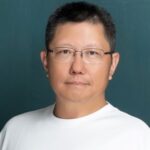 Gengchiau (Albert) Liang
Gengchiau (Albert) Liang
Industry Academia Innovation School, National Yang Ming Chiao Tung University, Taiwan
Email: gcliang@nycu.edu.tw
Homepage: https://nusececnng.wixsite.com/home
Titles:
- Physics of Nanoelectronics and Spintronics and Device Applications
- Electron and spin transport in novel materials
- Device physics of Probabilistic-Bits and their applications to stochastic/Probabilistic computing
Abstract:
Leading electronics engineers defied Moore’s Law’s demise for decades. Shrinking transistors once reduced costs, increased functionality, and lowered energy consumption, while microelectronics hit a “power wall.” Especially, the recent development of electronic device applications is continuously becoming more strongly connected with the advances of unconventional computations, such as neuromorphic computing and stochastic computing. These are especially crucial for power management to reliably process increasing amounts of data for longer periods. Therefore, the development of low power-consumption devices, even for non-volatile electronics, is essential for future device applications.
In these talks, hence, I shall first give an introduction to the up-to-date development of ultra-low-power consumption and high-performance devices by applying novel functional operation principles based on advanced materials such as 2D layered material FETs and Ferroelectric materials and spintronic materials, cf., ferrimagnetic materials. Then, I will discuss device physics and the performance of these devices as well as the challenges from the practical considerations. Thirdly, this talk will touch on their potential applications in future information and computational systems. Lastly, I will address stochastic computing utilizing p-bits composed of MTJ or FE-FETs, highlighting both the promising applications and the accompanying challenges in implementing these innovative technologies.
Bio:
Dr. Gengchiau Liang holds a Ph.D. in electrical and computer engineering from Purdue University, preceded by B.S. and M.S. degrees in physics from Taiwan’s National Tsinghua University. His academic journey began in 2006 as an assistant professor at the Department of Electrical and Computer Engineering at the National University of Singapore, where he later ascended to the position of associate professor in 2012. Since 2023, Dr. Liang has assumed a full professorship with an IAIS & TSMC fellowship at the Institute of Pioneer Semiconductor Innovation, within the Industry-Academia Innovation School of the National Yang-Ming Chiao Tung University. Dr. Liang’s research is anchored in the theoretical exploration and modelling of advanced materials, with a primary focus on their application in nanoscale electronic and spintronic devices. He delves into specialized areas such as 2D materials, topological insulators, and materials exhibiting strong spin-orbit torque (SOT). Through his meticulous investigations into the unique properties of these materials, Dr. Liang aspires to pioneer innovative device designs that enhance the performance and functionality of nanoscale field-effect transistors (FETs), and novel functional devices. His ultimate objective is to propel the development of more efficient, low-power consumption devices with enhanced capabilities for energy-efficient computing for unconventional computation.
Affiliation: Professor, Electrical Engineering, and Executive Associate Dean, College of Engineering, University of South Florida, 4202 East Fowler Avenue, Tampa, FL-33620
E-Mail Address: bhanja@usf.edu
Title: Spintronics Beyond Memory Operations
Abstract:
This talk explores the multifaceted capabilities of spintronic memory systems, encompassing in-memory processing, security applications, and solving complex optimization problems. These advancements can potentially reshape the computing landscape by providing more efficient, secure, and accessible computational solutions. It will be structured into two key segments: The first part of the talk focuses on the concept of processing within the memory itself, utilizing racetrack technology. This involves harnessing the signatures from multiple memory cells to perform computational tasks directly within the memory array. This innovative approach streamlines the data processing pipeline and explores the computational capacity inherent in the memory hardware. The second aspect addresses the intriguing concept of using dipolar coupling between memory elements for information processing and transfer. By exploiting the interactions between memory elements, novel opportunities for performing computations and data transfer emerge. This can lead to more efficient and versatile computing systems. The presentation’s second part delves into applying spintronic memory as physically unclonable functions (PUFs). These PUFs can generate unique and unforgeable security primitives, bolstering hardware security. This can enhance the security of various systems and applications, making them more resistant to unauthorized access or tampering.
Title: Unconventional Computing using Spintronics
Abstract:
Quadratic Unconstrained Binary Optimizing (QUBO) is a combinatorial optimization problem that has become essential to machine learning, economics, and healthcare applications. Therefore, QUBO solvers have seen a significant boost in their demand. These problems are computationally expensive, complex to parallelize, and require MIMD approaches. Ising machines such as D-wave have proposed a quantum solution for solving these NP-hard optimization problems. Several data-dominant application spaces, namely protein folding problems in Computational Biology, genome sequencing for COVID-19 and other pandemic diseases, and traffic patterns in social media, have benefitted from this problem mapping and one-shot solution. Although they can solve QUBO problems, the exceptionally high operating cost due to the cryo-cooling for quantum Ising machines might not justify the accuracy they achieve. In this talk, we will explore a magnetic QUBO-solver, which could solve the problems more quickly and cost-effectively at room temperature. Because the Hamiltonian of a system of coupled nanomagnets is quadratic, a wide class of quadratic energy minimization can be solved much more quickly by the relaxation of a grid of nanomagnets than by a conventional Boolean processor. Our research shows that magnet-based solutions are independent of problem size as the ground state of the magnets yield the optimization solution in parallel. This co-processor consists of a programmable grid of magnetic cells that can generate any magnetic layout in a 2D plane and will be integrated with peripheral control similar to STT-MRAM memory. This talk will focus on state-variable design, problem mapping and reconfigurability.
Bio:
Sanjukta Bhanja received a bachelor’s degree in Electrical Engineering from Jadavpur University, Calcutta, and a Master’s degree from the Indian Institute of Science, Bangalore. She earned her Ph.D. in Computer Science and Engineering from the University of South Florida, Tampa. She is currently a professor at the Department of Electrical Engineering at the University of South Florida. Currently, Bhanja serves as Executive Associate Dean for the College of Engineering since FY’2021.
Sanjukta Bhanja’s research spans VLSI, nano-electronics, and applied physics, with external sponsorship from the National Science Foundation and NASA. She has graduated 12 Ph.D. graduates who’ve excelled in high-tech industries and advises four doctoral students. Her creative works are published in top-tier peer-reviewed journals and conferences, including high-impact journals such as Nature Nanotechnology. She has been an Associate Editor of the IEEE Transactions on VLSI Systems and ACM Journal on Emerging Technologies in Computing Systems. Besides serving on various IEEE and ACM conferences’ Technical Program Committees (TPC), she has assumed leadership roles in Conference organization and steering committees. She organized a National Science Foundation-sponsored conference on ”Field-coupled Nano-computing” that created a roadmap and evaluated research progress in Field-coupled computing. Her accolades include the NSF CAREER Award, “Outstanding Faculty Research Achievement Award” from USF, Outstanding Undergraduate Teaching recognition, the F.E.F William Jones Outstanding Mentor Award, and certification as an Executive Leadership Fellow in the ELATES at Drexel® program for 2020-2021.
Web URL: http://www.eng.usf.edu/bhanja/
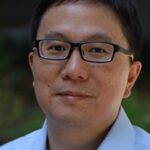 Xiangfeng Duan
Xiangfeng Duan
UCLA, Department of Chemistry and Biochemistry, CA, USA
E-Mail: xduan@chem.ucla.edu
Distinguished Lecturer Talk Title:
2D Transistors: Promises, Problems, and Prospects
Abstract:
Two-dimensional (2D) semiconductors have attracted tremendous interest as atomically thin channels for continued transistor scaling. However, despite many proof-of-concept demonstrations, the full potential of 2D transistors remains elusive. To this end, the fundamental merits and technological limits of 2D transistors need a critical assessment, reality check, and objective projection. In this talk, I will briefly review the promises and the current status of 2D transistors, and highlight the widely used device parameters (e.g., carrier mobility, contact resistance) could be frequently misestimated or misinterpreted, and may not be the most reliable performance metrics for benchmarking 2D transistors. We suggest the saturation or on-state current density, especially in the short channel limit, could provide a more reliable measure for assessing the potential of diverse 2D semiconductors, and should be applied for cross-checking different studies, especially when milestone performance metrics are claimed. I next summarize the critical technical challenges and current status in optimizing the channel, contacts, dielectric, and substrate interfaces and outline the potential pathways to push the limit of 2D transistors; lastly conclude with a prospect on the critical technical targets, the key technological hurdles to enable the lab-to-fab transition, and the potential opportunities arising in these atomically thin semiconductors.
Highly stretchable van der Waals thin-films for adaptable and breathable electronics
The integration of electronic systems with irregular, soft objects is of increasing interest for many emerging electronic applications including ubiquitous electronics for internet of things and bioelectronics intimately interacting with living organisms. Although the hard inorganic materials can be made flexible in the ultrathin membrane format, they are hardly stretchable and fundamentally incapable of forming conformal interface with irregular geometries with non-zero Gaussian curvatures due to the topological limitations. Here I introduce a unique design of highly stretchable van der Waals thin films (VDWTFs) for microscopically adaptable membrane electronics. Assembled from solution-processable two-dimensional (2D) nanosheets, the VDWTFs feature bond-free vdW interactions among the staggered nanosheets, with a sliding and rotation degree of freedom between neighbouring nanosheets to ensure extraordinary mechanical flexibility, stretchability, malleability and adaptability to irregular surface topographies. Additionally, the staggered nanosheet architecture features a highly interconnected percolation network of nanometre-scale channels with an excellent permeability. The freestanding VDWTFs show an excellent mechanical match with soft biological tissues, naturally adapting to microscopic topographies and directly merging with dynamically changing organisms with highly conformal interfaces, endowing living organisms with electronic functions, including leaf-gate and skin-gate VDWTF transistors. With excellent conformability and adaptability to skin textures, the skin transistors allow for high fidelity monitoring skin potentials and electrophysiological signals with excellent signal-to-noise ratio and superior immunity to motion artifacts. The VDWTFs thus define a new platform of electronic membranes readily adaptable to different form factors, and can open up exciting opportunities for many emerging electronic applications.
High-Order Van Der Waals Superlattices and Artificial Quantum Solid Beyond Mechanical Exfoliation and Restacking
The advent of two-dimensional atomic crystals (2DACs) and van der Waals heterostructures (vdWHs) has inspired a new thinking on heterostructure construction beyond the limits of lattice matching requirement. However, the vdWHs explored to date have been largely limited to relatively simple systems with a small number of building blocks. The preparation of high-order vdW superlattices with a larger number of alternating units is exponentially more challenging due to the limited yield and scalability of the commonly used exfoliation-and-restacking strategy. Here I will discuss strategies to create high-order vdW superlattices (vdWSLs). First, by exploiting a capillary-force-driven rolling-up process, we show a series of synthetic VDWHs can be transformed into high-order vdWSLs with alternating atomic layers of widely variable material compositions, electronic band offset dimensions, chirality and topology. Alternatively, we further introduce a molecular intercalation approach to prepare a new family of hybrid superlattices consisting of alternating layers of covalently bonded 2D atomic layers and self-assembled molecular layers, which opens the door to exploit highly versatile molecular design strategies to tailor solid-state materials, enabling artificial materials with designable structural motifs and tunable electronic properties beyond the reach of conventional crystalline solids. We will particularly highlight a recent example of a new class of chiral molecular intercalation superlattices with robust chiral-induced spin selectivity. The formation of high-order vdW superlattices defines a rich artificial materials platform to unlock previously inaccessible physical limits and enable new device concepts beyond the reach of the existing materials.
Bio:
Dr. Duan received his B.S. Degree from University of Science and Technology of China in 1997, and Ph.D. degree from Harvard University in 2002. He was a Founding Scientist and then Manager of Advanced Technology at Nanosys Inc., a nanotechnology startup founded based partly on his doctoral research. Dr. Duan joined UCLA with a Howard Reiss Career Development Chair in 2008, and was promoted to Associate Professor in 2012 and Full Professor in 2013. Dr. Duan’s research interest includes nanoscale materials, devices and their applications in future electronic and energy technologies. Dr. Duan has published over 300 papers with over 85,000 citations, and holds >50 issued US patents. Dr. Duan has received many awards for his pioneering research in nanoscale science and technology, including MIT Technology Review Top-100 Innovator Award, NIH Director’s New Innovator Award, NSF Career Award, Alpha Chi Sigma Glen T. Seaborg Award, Herbert Newby McCoy Research Award, US Presidential Early Career Award for Scientists and Engineers (PECASE), ONR Young Investigator Award, DOE Early Career Scientist Award, Human Frontier Science Program Young Investigator Award, Dupont Young Professor, Journal of Materials Chemistry Lectureship, International Union of Materials Research Society and Singapore Materials Research Society Young Researcher Award, the Beilby Medal and Prize, the Nano Korea Award, International Society of Electrochemistry Zhao-Wu Tian Prize for Energy Electrochemistry, Science China Materials Innovation Award, AIP Horizons Lectureship, NanoMaterials Science Young Scientist Award, Materials Research Society Middle Career Researcher Award and most recently IEEE Pioneer Award in Nanotechnology. He is currently an elected Fellow of Royal Society of Chemistry and Fellow of American Association for the Advancement of Science.
URL: http://xduan.chem.ucla.edu
 Zetian Mi
Zetian Mi
Department of Electrical Engineering and Computer Science, University of Michigan, USA
E-Mail: ztmi@umich.edu
Distinguished Lecturer Talk Title:
Nanoscale and Quantum Engineering of III-nitrides for High Efficiency UV Optoelectronics and Micro LEDs
Abstract:
Microscale light emitting diodes (micro-LEDs), as well as LEDs and laser diodes operating in the mid and deep ultraviolet (UV), have emerged as the frontier of semiconductor optoelectronics and are poised to revolutionize mobile displays, virtual/augmented reality, water purification, sterilization, and many other critical applications. The achievement of high efficiency micro-LEDs and UV optoelectronics, however, has remained extremely challenging, due to materials imperfection of conventional III-nitride quantum wells. Here, I will present recent advances of nanoscale and quantum engineering of III-nitride heterostructures that can fundamentally break the efficiency bottleneck of micro-LEDs and deep UV optoelectronics. Due to the efficient surface strain relaxation, III-nitride nanostructures exhibit significantly reduced dislocation densities compared to their conventional quantum well counterparts. Our studies have further shown that p-type Mg-dopant incorporation is much more efficient in nanostructures. These attributes have been exploited to realize high efficiency micro-LEDs operating in the deep visible (green and red) and to achieve relatively efficient LEDs operating in the UV-C spectra. Moreover, the three-dimensional quantum confinement of charge carriers can drastically reduce the transparency carrier density of ultrawide bandgap semiconductors, leading to, for the first time, electrically pumped mid and deep UV laser diodes with ultralow threshold operation.
Bio:
Zetian Mi is a Professor in the Department of Electrical Engineering and Computer Science at the University of Michigan, Ann Arbor. He received the PhD degree in Applied Physics at the University of Michigan in 2006. His teaching and research interests are in the areas of low dimensional semiconductors and their applications in photonic, electronic, clean energy, and quantum devices and systems. He was a faculty member at McGill University from 2007 to 2016, where he received several awards, including the Hydro-Québec Nano-Engineering Scholar Award in 2009, the William Dawson Scholar Award in 2011, the Christophe Pierre Award for Research Excellence in 2012, and the Engineering Innovation Award in 2015. Prof. Mi has received the Science and Engineering Award from W. M. Keck Foundation in 2020 and the David E. Liddle Research Excellence Award in 2021. Prof. Mi has also received the Young Investigator Award from the 27th North American Molecular Beam Epitaxy (MBE) Conference in 2010, the Young Scientist Award from the International Symposium on Compound Semiconductors in 2015, and the IEEE Photonics Society Distinguished Lecturer Award in 2020. Prof. Mi currently serves as the Editor-in-Chief of Progress in Quantum Electronics, Serial Editor of Semiconductors and Semimetals, and Vice President for Conferences of IEEE Photonics Society. Prof. Mi has served as the Chair of many international conferences, including the General Chair of IEEE Photonics Society Summer Topicals Meeting in 2016-2017, Program Chair of 30th North American Conference in 2013, Co-Chair of International Symposium on Semiconductor Light Emitting Devices in 2017, General Chair of IEEE Photonics Conference in 2020, and Program Chair of Compound Semiconductor Week in 2022. Prof. Mi is a fellow of IEEE, APS, Optica, and SPIE. Prof. Mi is a co-founder of NS Nanotech, Inc. and NX Fuels, Inc.
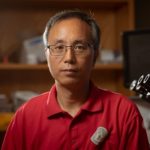 Jiming Bao
Jiming Bao
Cullen College of Engineering Building, University of Houston, TX, USA
Email: jbao@uh.edu
Distinguished Lecturer Talk Title:
Cubic Boron Arsenide (cBAs): a Promising Semiconductor for Next Generation Electronics
Abstract:
Cubic boron arsenide (c-BAs) is an indirect bandgap (1.82 eV) semiconductor, it has a similar band structure as silicon, but its thermal conductivity is 10 times higher and its carrier mobility is three times larger at room temperature. This suitable bandgap, simultaneous high thermal conductivity and high carrier mobility have made c-BAs a promising material for next generation electronics, especially after recent experimental verifications of these excellent thermal and electronic properties. However, many challenges still remain in order for c-BAs to realize its many promises. Besides the challenge of synthesis of uniform large size c-BAs crystals, techniques that can rapidly characterize and screen high quality c-BAs are still lacking. In this talk, I will first give a brief introduction to the history and basic properties of c-BAs, I will then explain its next-only-to-diamond high thermal conductivity. After that, I will show optical techniques that have been developed to measure thermal conductivity and carrier mobility. Finally I will show photoluminescence and Raman spectra of c-BAs, and discuss the challenges of using them to identify and characterize high quality c-BAs.
Bio:
Jiming Bao is a professor of Electrical and Computer Engineering at the University of Houston. He graduated from Zhejiang University with B.S. and M.S. in Physics. He obtained his Ph.D. in Applied Physics in 2003 from the University of Michigan under Roberto Merlin; he then did post-doctoral research in Federico Capasso’s group at Harvard University before joining the University of Houston in 2008 as an assistant professor. Dr. Bao is interested in developing and understanding new nanomaterials and then exploring their novel applications in energy, optoelectronics and sensing. Dr. Bao is a Fellow of the Optical Society of America (OSA) and American Physical Society (APS).
 Xiaoying Zhuang
Xiaoying Zhuang
Faculty of Mathematics and Physics, Institute of Photonics, Leibniz University Hannover, Germany
Email: zhuang@iop.uni-hannover.de
Distinguished Lecturer Talk Title:
Machine Learning Based Multiscale Exploration and Characterization of 2D materials
Abstract:
2D materials have attracted widespread attention in recent years. They have some unique properties that other usual materials do not have. For example, its electrical, mechanical, thermal and optical properties vary with the number of layers. Density functional theory (DFT) calculations are robust tools to explore the physical properties of pristine structures as well as to explore new type of 2D nanomaterials at their ground state, but they become exceedingly expensive for large systems or at finite temperatures. Classical molecular dynamics (CMD) simulations offer the possibility to study larger systems at elevated temperatures, but they require accurate interatomic potentials. We developed machine-learning interatomic potentials (MLIPs) passively fitted to computationally inexpensive ab-initio datasets which can be used to evaluate the complex physical properties of nanostructured materials, with only a fractional computational cost of conventional DFT-based solutions, cutting down from months to tens of hours. MLIPs offer extraordinary capabilities to marry the first-principles accuracy with multiscale modeling and thus enable the modeling of complex nanostructures at continuum level and has flexibility without paying unaffordable computational costs. We show outstanding and robust potential to develop fully automated platforms, to design, optimize and explore various properties of 2D materials and structures at continuum level, and with inherent precision and robustness.
Bio:
Dr. Xiaoying Zhuang’s is among the leading and renowned scientists in the field of modeling and simulation (or Simulation Based Engineering Science) and its application to challenging problems in engineering and materials science, especially the computer-aided design of new nanocomposites and nanostructure. Her highly interdisciplinary research combines the areas of scientific computing, nanotechnology, mechanics, applied mathematics and materials science. Her contributions did not have only a major impact within the academic community, but they were also used commercially to tackle difficult and highly complex problems, such as the computer-assisted development of new materials. Dr. Xiaoying Zhuang’s work in the field of computer-assisted nanostructure and nanomaterials design, which she is meanwhile pursuing for around a decade, is truly seminal and groundbreaking. Dr. Xiaoying Zhuang’s recently developed groundbreaking work on ‘Machine learning (ML) based potentials’ and adaptive multi-scale modeling has laid the foundation for performing calculations from the smallest quantum mechanical scale (due to the highly precise and extremely efficient ML potentials) up to the macro-scale. For graphene/borophene heterostructures she has already convincingly proven the accuracy of these predictions. Because of these pioneering developments, a drastic improvement in the development of new, more complex materials can be expected in the foreseeable future.
Dr. Zhuang’s very extensive and pioneering research in this area is an important step towards a new paradigm for the efficient use of computational methods for the development of new materials. Her revolutionary paradigm, which she developed and implemented for novel carbon-reinforced polymer-matrix composites as well as flexoelectric energy harvesters, has been awarded with two prestigious awards: the Sofia Kovaleskaja Award (2015 on polymer-matrix composites) and the ERC Starting Grant (2019 on flexoelectric energy converters). Prof. Zhuang had already proven that such approaches are suitable for the development of new materials. Her models and simulations have already led to the development of a new ‘nano-coating’ called LUMA (in 2016), which has already been fabricated and applied commercially.
 Li Tao
Li Tao
School of Materials Science and Engineering, Southeast University, China
Email: tao@seu.edu.cn
Distinguished Lecturer Talk Title:
Emerging Low dimensional Materials and Devices for Wearable IoTs and Healthcare Applications in the Post Moore Era
Abstract:
Low-dimensional atomic sheets yield collective properties of mechanical flexibility and tunable bandgap for innovative flexible micro-nano devices and systems. This talk will introduce silicene transistors, bismuthene devices and boron nitride (BN) quantum dots as representatives of low-dimensional materials for flexible/wearable electronics. Our effort in a unique nanofabrication approach allows silicene transistor make its debut, corroborating theoretically predicted ambipolar transport with Dirac band structure. This requires a careful engineering of the number of layers of silicene and its interface in between source/drain electrodes and capping dielectrics, stabilizing and preserving silicene during transfer and device fabrication. This talk also highlights our recent experimental progress on the synthesis, characterization and device integration on bismuthene and hBN. We demonstrated a Vis-NIR photodetector with μs response enabled by bismuthene/Si(111) heterolayer. In a similar strategy of surface state tuning via amination degree, hBN quantum dots have been implemented with full-color emission (420−610 nm) and quantum yield over 32.27%. Owing to its unique thermal stability, hBN quantum dots hold great potential for flexible display, optoelectronic and various other applications.
Bio:
Professor Li Tao obtained bachelor’s degree from Southeast University in 2004, and received his Ph.D. degree from the University of Texas at Dallas in 2010. Then, he entered the University of Texas at Austin Microelectronics Research Center for post-doctoral research and was promoted to research scientist in 2012. He joined Southeast University as a professor of Materials Science and Engineering in 2016. Prof. Tao’s research interests include nanofabrication, two-dimensional semiconductor materials and devices, and the cross-application of micro-systems and nanotechnology in healthcare and IoTs. He has over 50 publications, including first/corresponding author Nature Nanotechnology (citations>1000), Chemical Society Reviews, IEEE TAP, Infomat etc. He serves as associate editors for Research (the first Science Partner Journal) and MicroElectronics Engineering. Prof. Tao has delivered more than 15 invited talks in IEEE, MRS, APS and other conferences, and served as the conference general chair for IEEE NMDC 2020&2022. He is a senior member of IEEE.
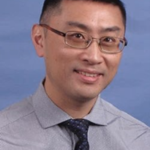 Zenghui Wang
Zenghui Wang
Institute of Fundamental and Frontier Sciences, University of Electronic Science and Technology, China
Email: zenghui.wang@uestc.edu.cn
Distinguished Lecturer Talk Title:
A Vibrant New World Exploring New Physics and Materials with Nanoelectromechanical Systems (NEMS)
Abstract:
The advent of low-dimensional nanostructures has enabled a plethora of new devices and systems. Among them, nanoelectromechanical systems (NEMS) offer the unique capability of coupling exquisite material properties found in these atomically-defined nanostructures with their mechanical degree of freedom, opening new opportunities for exploring exotic phenomena at the nanoscale. In particular, as these devices are driven into mechanical vibration—just like musical instruments—they become essentially nanoscale guitars, drums, tuning folks, and so on. By studying the infinitesimal mechanical vibrations in these minuscule “music instruments”, i.e., listening to the “sound of music” at the nanoscale, researchers can study a number of fundamental physical processes such as absorption, phase transition, anisotropy, and nonlinear processes, and can explore the opportunity of building novel nanodevices for applications such as sensing, computing, and signal processing.
Bio:
Max Zenghui Wang is currently a professor at the University of Electronic Science and Technology of China (UESTC). His research interests and expertise primarily focus on nanoscale devices and systems, particularly Nanoscale Resonators, and High-Frequency Resonant Sensors & Transducers. He earned a Ph.D. degree (2010) from University of Washington, Seattle, and conducted research at Cornell University and Case Western Reserve University before joing UESTC. He has published dozens of research articles in journal such as Science, Nature Physics, Nature Nanotechnology, Nature Communications, and Science Advances. He has given dozens of invited talks and seminars at peer-reviewed conferences and research universities. He is an IEEE senior member, and has been serving on the Technical Program Committees for IEEE MEMS, IEEE IFCS, IEEE NANO, IEEE NEMS, IEEE NMDC, Transducers, and the MEMS/NEMS Technical Group at the American Vacuum Society (AVS) International Symposium and Exhibition.


